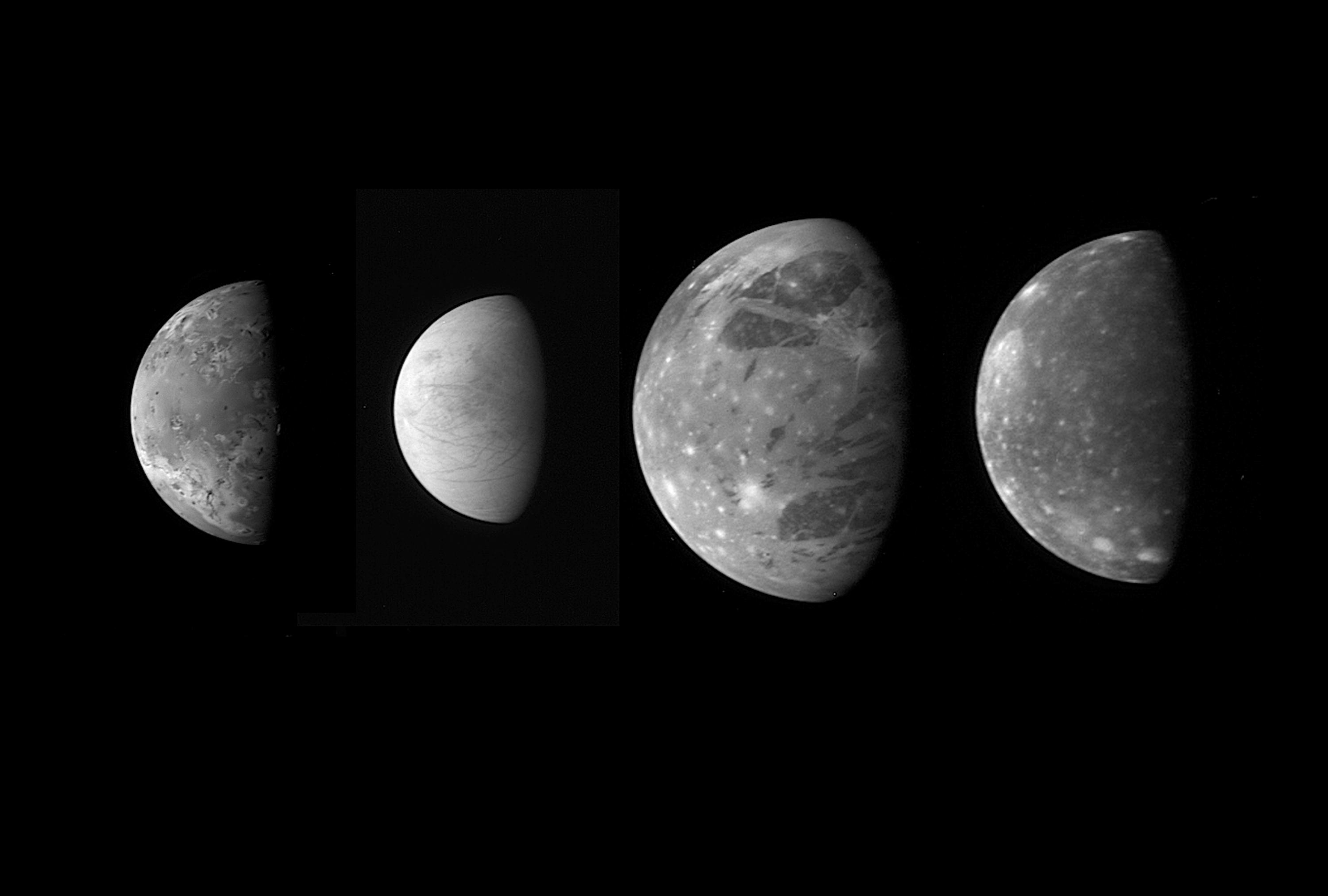Source: http://www.esa.int/esaCP/SEM9I4QWJ1H_index_0.html
The ESA's selection of the JUICE mission is an exciting
decision that affects planetary scientists around the world. It will provide a
path for exploration of the outer solar system that will extend well beyond the
current Cassini, Juno and New Horizons missions, which will all conclude within
the next six years. In selecting this mission, the ESA sends a message to the
scientific community that exploration of the outer solar system is an important
priority.
Once JUICE arrives in the Jovian system in 2030, it will perform several flyby encounters of Callisto and Europa, and finally transfer to a suite of orbits about Ganymede. This mission is the first orbiter of an icy moon and provides the opportunity to study the potential for habitability of worlds around gas giant planets.
Once JUICE arrives in the Jovian system in 2030, it will perform several flyby encounters of Callisto and Europa, and finally transfer to a suite of orbits about Ganymede. This mission is the first orbiter of an icy moon and provides the opportunity to study the potential for habitability of worlds around gas giant planets.
Source: http://photojournal.jpl.nasa.gov/catalog/PIA09352
Ganymede is definitely my favorite, as I spent most of my graduate career studying this exciting moon. It is the largest moon in the solar system. It has a liquid water ocean beneath its icy surface. It also has aurora and is the only moon we know of that has its own magnetic field. This mission specifically seeks to characterize the extent of the subsurface ocean and its relationship to the interior structure of this fascinating moon. It will also examine the composition, distribution and evolution of surface features, and, through in situ measurements, will aid in our understanding of Ganymede's the near-space environment.
Ganymede is not the only object to be studied by this mission, the spacecraft will also spend time studying Jupiter as an archetype for a gas giant (of which we now have hundreds of exoplanet examples!). It will study Jupiter's atmosphere and magnetosphere and the coupled interactions of Jupiter and its family of icy moons. The mission also plans to execute several flyby encounters of Europa and Callisto, which will allow us to take a closer look at these beautifully diverse examples of icy worlds. Callisto is one of the oldest surfaces and represents a history of the early Jovian system. Its interior structure is a mystery, and we're excited to get better images and measurements to learn more about how this body formed and what it can tell us about the earliest 'recorded' period in the solar system. Europa has a subsurface ocean that is likely in direct contact with silicates and has demonstrated recent activity. The induced currents and magnetic fields generated in its ocean give us direct clues as to its depth and composition (compositions, along with features/structures on the surface, can tell us how active it is and where materials are sourced from).
All in all it is a very exciting time to be a planetary scientist, and I look forward to seeing this mission develop over the next decade in preparation for launch!
Source: http://photojournal.jpl.nasa.gov/catalog/PIA04532
Story reposted from my GT release: http://amplifier.gatech.edu/articles/2012/05/next-stop-jupiter



No comments:
Post a Comment
Thanks for your comment! It will be posted as soon we review it.